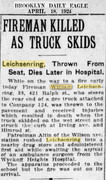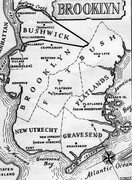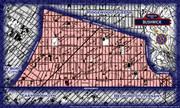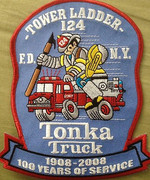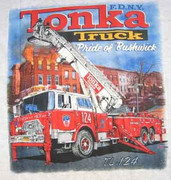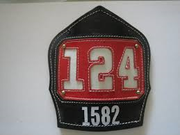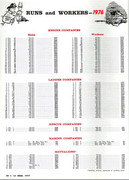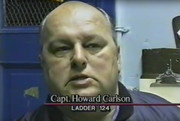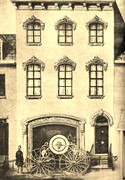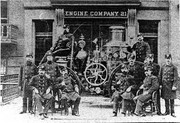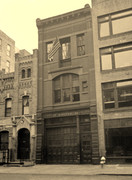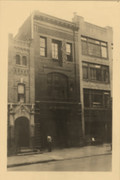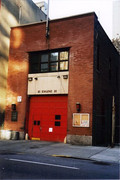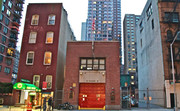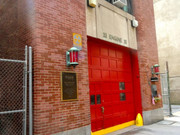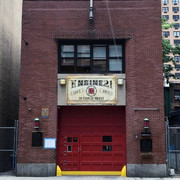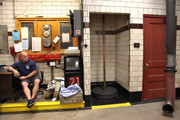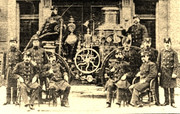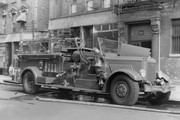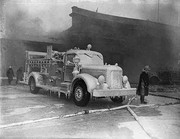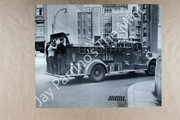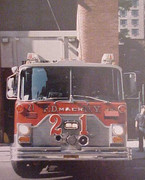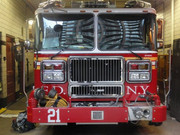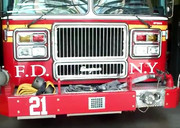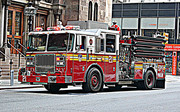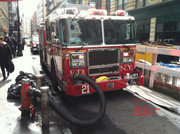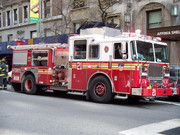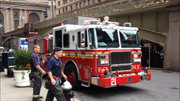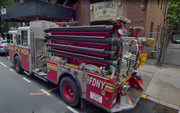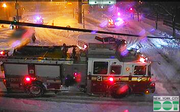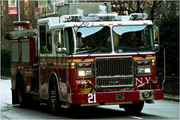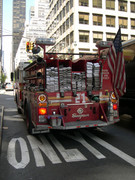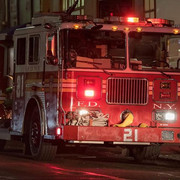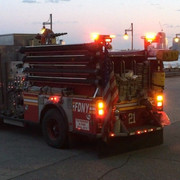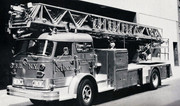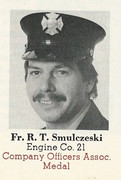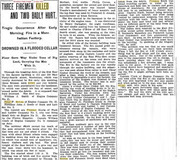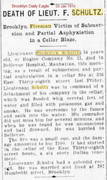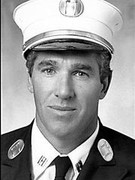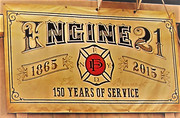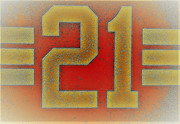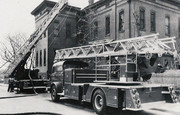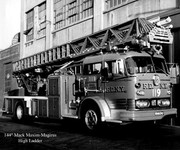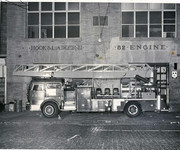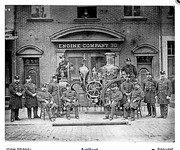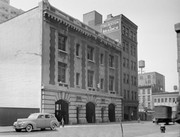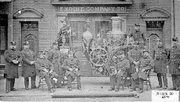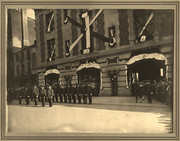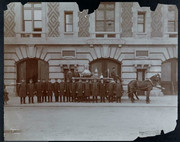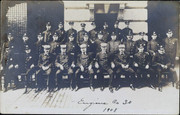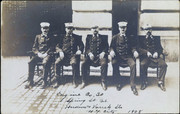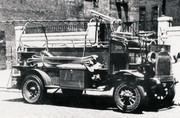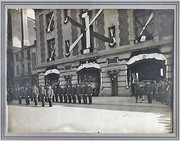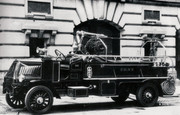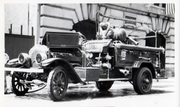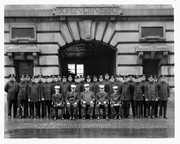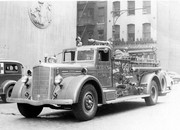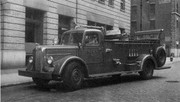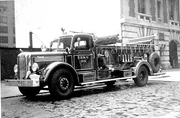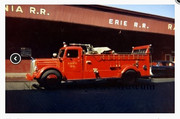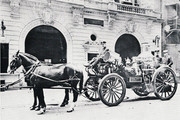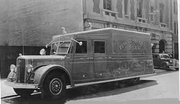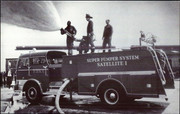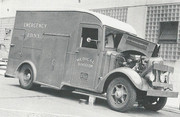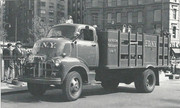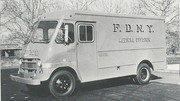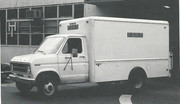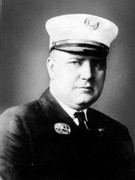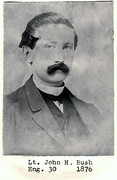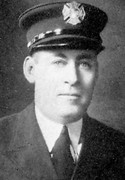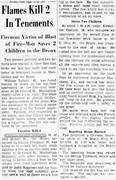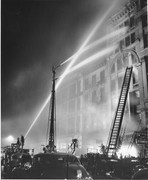Engine 30/Battalion 5 (continued:
LODD - BATTALION CHIEF WILLIAM P. HOGAN BATTALION 5 January 9, 1947:
FIRE ENGINEERING - TWO MORE NEW YORK FIREMEN LOST IN SECOND FIRE-COLLAPSE 02/01/1947
New Year?s Eve Tragedy Brings Death To a Chief and Firemen; Injures to Scores
THE New Year opened tragically for the New York Fire Department when two fires, involving the collapse of buildings, took the lives of two firemen and caused injuries to many others. The casualties brought to three the number of firemen fatally injured in the chain of almost identical catastrophes, which started with the Knickerbocker ice plant fire shortly before Christmas and resulted in the death of Fireman Frank Moorhead of Engine 93.
On New Year?s Eve, fire of undetermined origin in a seven-story loft building at 749 Broadway, between Eighth Street and Astor Place, was practically under control after nearly two hours of firefighting by forces summoned on three alarms, when the weight of Niagaras of water on fire-weakened supports dropped most of the roof which, in turn, carried away most of the floors, injuring more than a score of firefighters and trapping ten officers and men in the ruins.
The building, of uncertain age, measured 40x100 feet and is owned by Sailors? Snug Harbor. It was unsprinklered, of brick and joist construction, and had one straight-run stairway located behind the elevator shaft. Iron-shuttered windows in the rear opened onto a narrow court and passageway, in which was located fire escapes serving this and other adjoining structures.
The basement and ground floor were occupied by a luncheonette and a druggist. Second, third and seventh floors, by a manufacturer of bedspreads; fourth, storage for slippers: fifth, by manufacturer of brushes, and the sixth, by a lamp factory.
Firemen Trapped for Hours
The fire, reported to have originated on the fourth floor, quickly involved the upper floors and roof. The heat was intense in the rear and only the metal shutters prevented early extension across the narrow passageway into several adjoining old-type structures. Firemen working in the confined corridor and court and off the fire escapes, were in imminent danger of being caught by the flames and collapse.
Water tower and turret pipe streams were shot into the Broadway windows from highand low-pressure water supplies. Meanwhile, firemen carried their lines into the building itself to fight their way up the old-style stairway.
Approximately two hours after the start of the fire, sections of the roof dropped. Immediately after this Acting Dep. Chief Wm. Hogan ordered all hands out of the building and it is reported that, although knowing the risk he ran, he started up the stairway to make certain his warning was received and heeded. The collapse of the floors, taking with them the stairway, trapped the Chief and nine men, causing injuries to many others, some of whom narrowly escaped death.
Fire fighting immediately gave way to rescue. A fourth alarm was struck to provide adidtional forces. A disaster unit from Bellevue Hospital arrived together with doctors, ambulances and nurses from that and St. Vincent's Hospital. Off-duty officers and men responded rapidly and rescue operations went forward at fever heat. Because of the risk of further collapse and danger to rescue.rs, heavy street streams were shut down. Firemen of every rank burdowed into wreckage while power compressors were called from the Edison Company to aid in breeching the side-walk and walls of an adjoining building on Broadway.
At one stage there was fear of an explosion from leaking illuminating gas, and Chief Frank Murphy, in charge following the fourth alarm, ordered gas in the whole block shut off to insure safety, lcy footing complicated operations but, despite this fact, firemen swarmed up ladders and onto weakened floor sections to reach all but those buried deep in the debris. Fireman Walsh was removed in a litter by means of ladders down the front of the building. It was ten hours, however, before Fireman Bennett, the last of the firelighters, was extricated.
In order to reach the most seriously injured, buried in the wreckage, it was necessary to breach holes in the east wall of the fire building, and a heavy wall of the adjoining structure. Through these apertures, firemen and rescuers crawled into the ruins to reach victims. Other rescuers made their way into the basement, partially water-filled. Dr. Harry Archer, Deputy Fire Commissioner, and veteran medico of the department, assisted in rescuing an injured man from the basement, and in treating other trapped victims. In his two hours of rescue efforts, Dr. Archer administered hypodermics to several victims and at one time he reached a victim through the breached wall, to administer blood plasma. Dr. Edward Finestone, FDNY, also ministered to victims at considerable personal risk.
Officers who were active in leading the rescue work?some of them volunteering (being off duty at the time) were: Assistant Chief Conway, Deputy Chief William H. Taubert; Battalion Chiefs McPartland, Masset and O'Brien; Acting Battalion Chiefs Irwin (Supervising Engineer) and Jones of the Fire Department Shops and Captain Green of Rescue 1.
Chronology of the Fire
5:27 P. M.?Box 396, Broadway and Eighth. Engine 72?23?25; Ladder 3? 20; Rescue 1; Tower 2. Chief Ermentraut, 6th Battalion and Acting Division Chief Hogan, 2nd Division.
5:51 P. M.?Signal 7?5 calling Engine 18, last-due company.
5:57 P. M.?Second alarm. Chief Reynolds, 3rd Battalion; Deputy Chief Cashman, Fire Patrol (who special-called three additional sections for covers); Assistant Chief Donovan, in charge. Fire Chaplain Doyle?14?5?20?3?28; L 9; Searchlight 21.
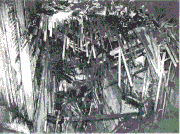
6:05 P. M.?High-pressure service raised to 150 PSI.
6:10 P. M.?Third alarm?E 55?24? 16?30?31; L 5; Chief Kirschenheiter, 2nd Battalion; Dr, Finestone; Acting Fire Marshal Scott; Assistant Marshals Reilly, Gribbon, Powers and Bernhart. Fire Commissioner Frank Quayle caught this alarm via radio in lower Manhattan and rolled in.
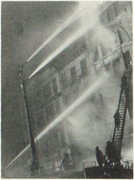
6:31 P. M.?High-pressure service raised to 175 PSI.
7:16 P. M.?Fourth Alarm (following collapse of floors)?E 17?11?7?1?3? 9; L (none; sent via telephone by order Commissioner Quayle); Chief O?Brien, 7th Battalion; Fire Chief Frank Murphy; also Chiefs Scanlon and Beeber; Acting Battalion Chiefs Jones and Irwin; Asst. Supervising Engineer Gaw; Dr. Archer, Dr. Nilsen and later, Dr. Kramer.
8:11 P. M.?Special call?Two ladders 11?12.
9:15 P. M.?Special call??Rescue 2.
10:36 P. M.?Special call?Thaw machine.
Locating: 12 pumpers and 4 ladders. Dispatchers relocated E 47 in E 76 and L 18 in L 11.
Total responses: 20 engines, 6 ladders, 2 rescues; 1 water tower, 1 searchlight. 1 fire-department ambulance, 1 fuel tank and 4 patrols (salvage).
Fire-alarm staff: Supervising dispatcher?Cruise; Dispatchers?Kleisch, Sedgwick, Brown, Lauritis and Dinan; Telephone?Joseph Quinn; Press desk? Fireman Vic. Cruise; Radio?Lorraine Lauritis.
Last Operations of Some Companies
Interestingly enough, the fire occurred within a few hours of the time set for the disbandment of several of the companies that were called to the emergency, as part of the department?s reorganization plan. Engines 25, 19 and 20 were scheduled to go out of existence at midnight. New Year?s Eve, but all were on duty at the fire at the time. Engine 25 returned to its station at 1:47 A. M., and then went out of existence; Engine 19 ?signed out? at 8:00 A. M. the morning after the fire, instead of 12.01. Engine 20 was relieved in time to go to Engine 72 (its new quarters) and deposit its apparatus at midnight so that Rescue 1 could take up its new quarters in that house.
The department?s field kitchen, manned by members of the Uniformed Firemen?s Association and buffs, served coffee to the chilled firemen.
Members of the Salvage Patrol under Deputy Chief Cashman and Captain Pritchard spread 157 salvage covers, of which 90 were reported ruined. The fire department also lost some hose and equipment in the crash.
Fireman Walsh died January 4 and Chief Hogan succumbed shortly after. Both received funeral honors of full chiefs.
Public Radio Broadcasting Unfortunate
The speed and extent of the commercial radio broadcasts of the tragedy brought about unfortunate repercussions. There was much disquietude among families that caught names of reported victims on the air, resulting also in a flood of inquiries to newspaper offices and municipal agencies. The re-broadcasts (recorded) of first-hand rescue operations by network stations also set in motion crowds of New Year?s Eve revelers, who converged on the scene, giving the hard-worked police and fire forces further trouble.
Those hospitalized as a result of the crash, in addition to Acting Deputy Chief William Hogan, 2nd Division, and Fireman Winfield Walsh, Ladder 9, were: Captains John T. McGuire, Ladder 5, and George Winters, Ladder 3; Lieutenants Jeremiah Cronin, Ladder 9, John T. Mitchell, Ladder 20, and Joseph Schick, Rescue 1; Firemen James Fisher, Adelbert Lipert, J. J. Poletto, all of Ladder 5; Harry Harriendorf, Aide to Chief Hogan; and Joseph Donahue, Rescue 1.
Four Firemen Buried in Third Building Collapse
New York?s third fire-collapse occurred on January 10, and buried four firemen, one a lieutenant. The men were working on the third floor of the four story loft building at 131 John Street, Manhattan, when the floor gave way, precipitating the men amid tons of debris, to the second floor. Three of the men were rescued quickly and removed through windows and down ladders, but the lieutenant, Thomas Rice, of Engine 6, was trapped under beams, machinery and rubble for more than an hour, and seriously injured.
The fire, for which only one alarm and special calls were sounded, was believed to have started at the rear of the third or fourth floors from an undetermined cause. The alarm was received by the fire department telegraph bureau at 2:12 A.M., bringing Engines 32-10-6-12; Ladders 15-10; Chief of the 1st Division and 1st and 2nd Battalions, and Water Tower 1. Special calls later brought Rescue 1, Searchlight 1 and Ladder 1, and the Fire Department ambulance.
Although the cause of the collapse has not been determined, it was attributed to the weight of water thrown into the upper stories to control the fire. The building, of four stories and basement, old style brick and wood construction, was occupied on the ground floor by a restaurant, second and third floors by the Star Cabinet and Carpentry Co., and the fourth floor by the Preferred Die Casting Co.
Those injured were: Lieut. Thomas Rice, Eng. 6, second degree burns of face, hands and legs, and shock; Paul Miller, Eng. 6, back injury, smoke inhalation and exposure; Edward Duggan, Eng. 32, shock and possible fractures of left leg and pelvis; and Gustave Johnson, Eng. 32, shock, exposure and bruises. All were hospitalized.
As in the case of the New Year?s Eve fire and collapse, fire extinguishing operations had to be curtailed in order not to drown men in the wreckage. Doctors and ambulances were quickly on the scene and firemen, aided by employees of the New York Steam Company, across the street from the fire, and Police, concentrated on removing the trapped victims. Dr. Harry Archer, First Deputy Fire Commissioner, was foremost in the van of rescuers. Fire Commissioner Frank Quayle and Chief of Staff of the Fire Department Frank Murphy, and Assistant Chief Martin Carrig took personal charge of operations, assisted by members of the Bureau of Combustibles, Building Department and other municipal agencies.
The fire ate its way through the upper part of the ancient structure leaving a heavy pall of smoke over the financial area, while firemen fought it from front and rear fire escapes, ladders, and adjoining buildings. It was brought under control by 4:00 A.M. The loss was not disclosed.
